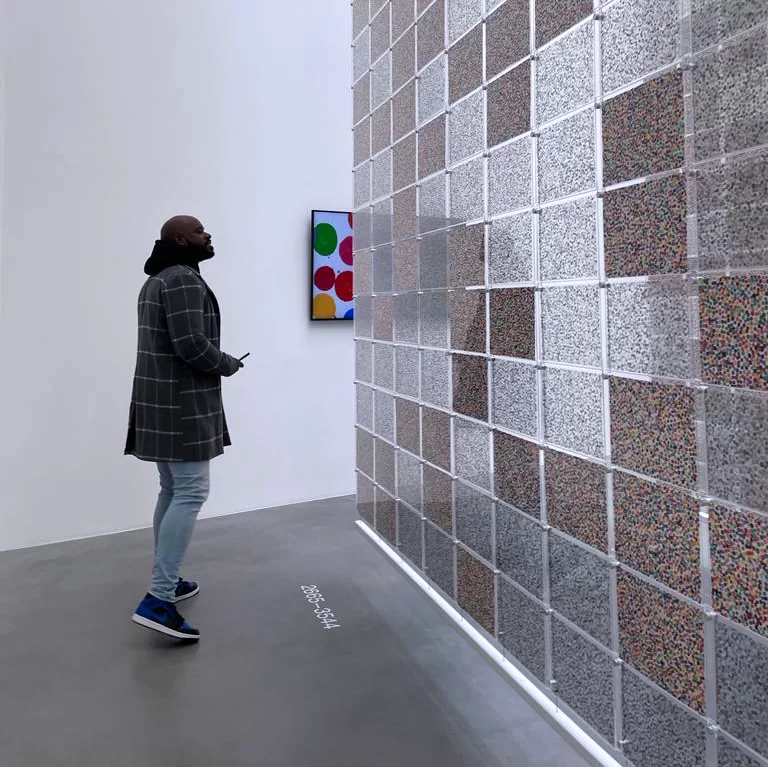Founders Marchella de Angelis and Kim Shaylor fuse contemporary art with car culture in MotoArto, a three-day immersive event redefining creative expression on four wheels.
Contemporary art and car culture don’t often share the same garage. But for the founders of MotoArto, that divide is exactly what makes their intersection so thrilling.
Launched by filmmaker and designer Marchella de Angelis and curator Kim Shaylor, MotoArto is a bold reimagining of the motor car—not as a status symbol or machine, but as a canvas, muse, and cultural mirror. The project brings together a diverse line-up of artists and motoring enthusiasts to explore cars as vessels of identity, emotion, and creative inspiration. The idea grew from De Angelis’s eight-year fascination with Outlaw cars, leading her to see their bespoke craftsmanship not just as design, but as art.
“It came naturally,” De Angelis said. “We both love art and cars, and we’re both creatives with a shared sensibility for aesthetics.”
For Shaylor, the concept taps into something nearly universal. “Everyone involved has had a moment of connection with a car in some way or form, whether they own a car or can even drive,” she said. “Drawing out a tiny strand of connection is all that’s needed for inspiration.”
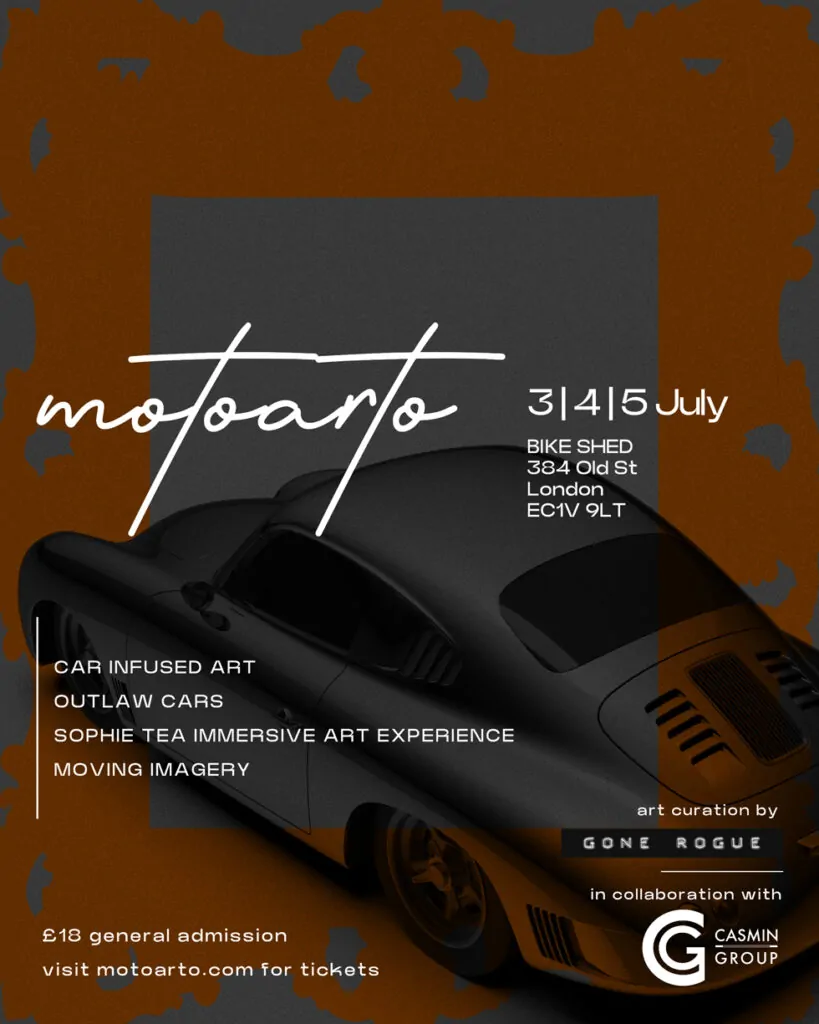
MotoArto is less an exhibition than a full-sensory experience. With artists like Sophie Tea, Lawrence Lek, Emma Gibbons, Maxim, and Alistair Morrison, the project stretches beyond the traditional gallery format. Visitors can expect live painting, immersive installations, performances, and interactive design—transforming the traditionally masculine realm of car culture into a more inclusive space of shared creativity and reimagined narratives.
From 3 to 5 July, against the backdrop of Shoreditch’s Bike Shed, MotoArto brings fresh energy to the motoring world, pushing back against outdated ideas of what car-inspired art can be.
Over the course of three days, a confluence of craftsmanship and creativity will unfold as renowned automotive restoration houses—Thornley Kelham, Frontline Cars, and Renard—present world premiere unveilings of their latest works. Alongside them, over 20 artists will debut new pieces that explore and reimagine car culture in bold, unexpected ways.
But beyond the spectacle, MotoArto poses deeper questions: Who has historically defined car culture? And what might it look like when opened up to new voices, new stories, and new forms of expression?
We spoke to the founders to learn more about the network—and what they have in store.
MotoArto runs from 3rd to 5th July 2025 at The Bike Shed, Shoreditch.

MotoArto Network is stepping into territory where car culture and contemporary art don’t usually meet. What made you feel now was the right time for something like this—and what gap are you hoping it fills?
Marchella de Angelis: We believe the timing to launch MotoArto is right now because cars and self-expression have always been intertwined and the custom and bespoke sector seems to have finally taken off in a big way.
So when cars are seen as works of art and art is inspired by cars, the intersection where the boundaries between art and automobiles blur. Look closely and you will see that these cars and bikes are truly works of art in themselves, hence this really isn’t about filling a gap, it’s about celebrating an evolution that is a little long over-due.
You come from really different creative worlds—Marchella through film and design, Kim through fine art and curation. How did that mix of perspectives shape how you worked together and picked the artists?
Marchella de Angelis: It was easy as we both love art and cars. And we are both creatives that fortunately also share a similar taste in aesthetics. You know it’s funny but creatives will always find ways to bond.
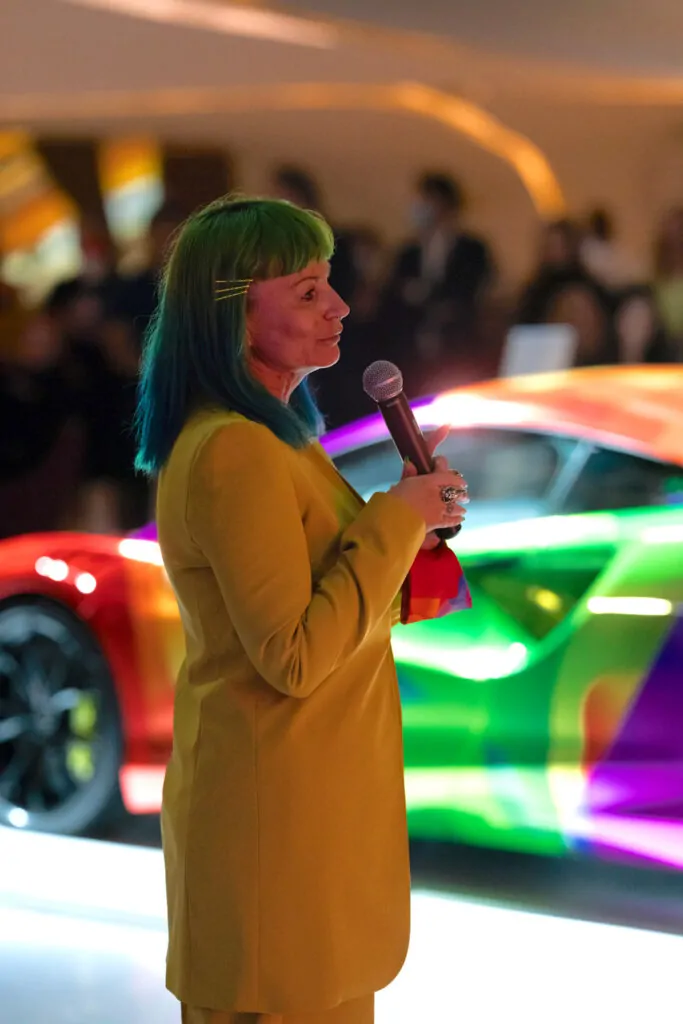
Kim Shaylor: Yes I’d met Marchella through one of my art shows and she immediately synergised with my vibe and when she later shared the concept – I was sold. We’ve picked artists that we have both already worked with but we’ve also been very fortunate in having many artists come forward to express their desire to be involved.
You’ve got artists like Sophie Tea, Lawrence Lek, Emma Gibbons, Alistair Morrison, Paul Fuentes, and Maxim involved. What drew you to them? What made them the right fit for a show that’s trying to rethink what “car art” even means?
Kim Shaylor: We already knew some of the artists and some of them already have amazing artworks that include cars whilst others like Sophie Tea, Gabriella Anouck, Alistair Morrison and Maxim were simply lured by the excitement of a challenge.
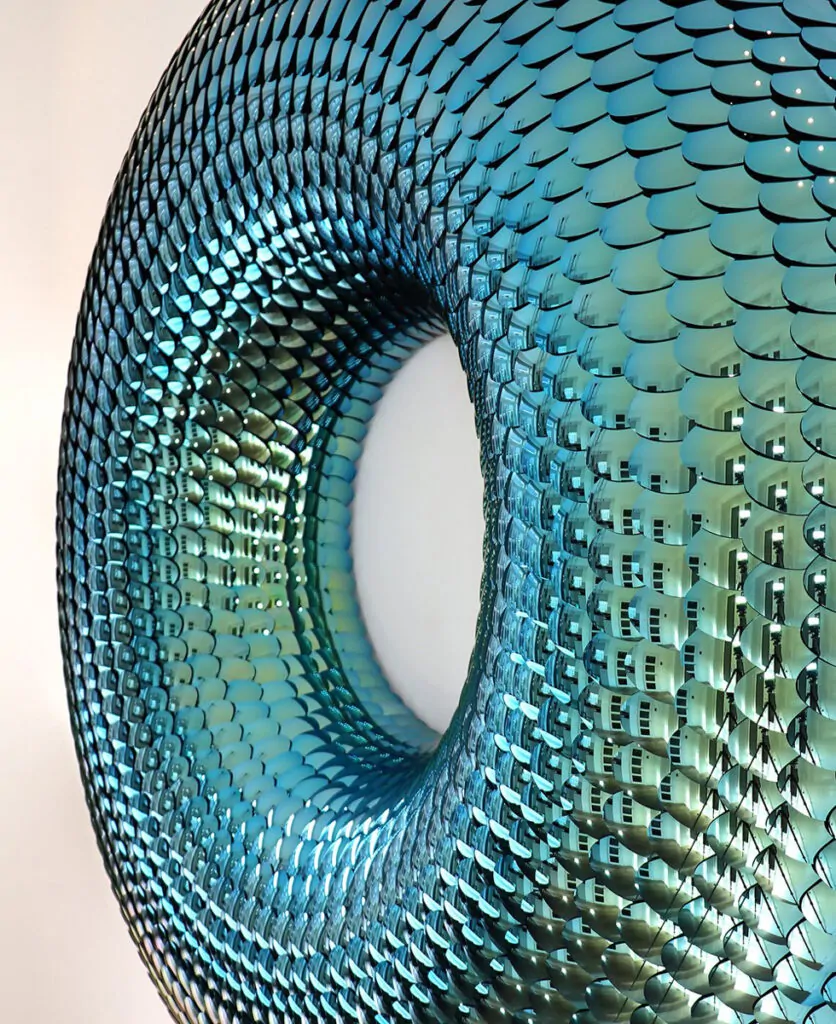
You get to know artists and what excites them and in this case, there is no right fit. It is simply a question of whether the artist is inspired or not.
You’ve said you wanted artists to break away from the usual ideas of what car-inspired art looks like. What kind of direction—or freedom—did you give them to get there?
Kim Shaylor: Everyone involved has had a moment of connection with a car in some way or form, whether they own a car or can even drive. Drawing out a tiny strand of connection is all that’s needed for inspiration.
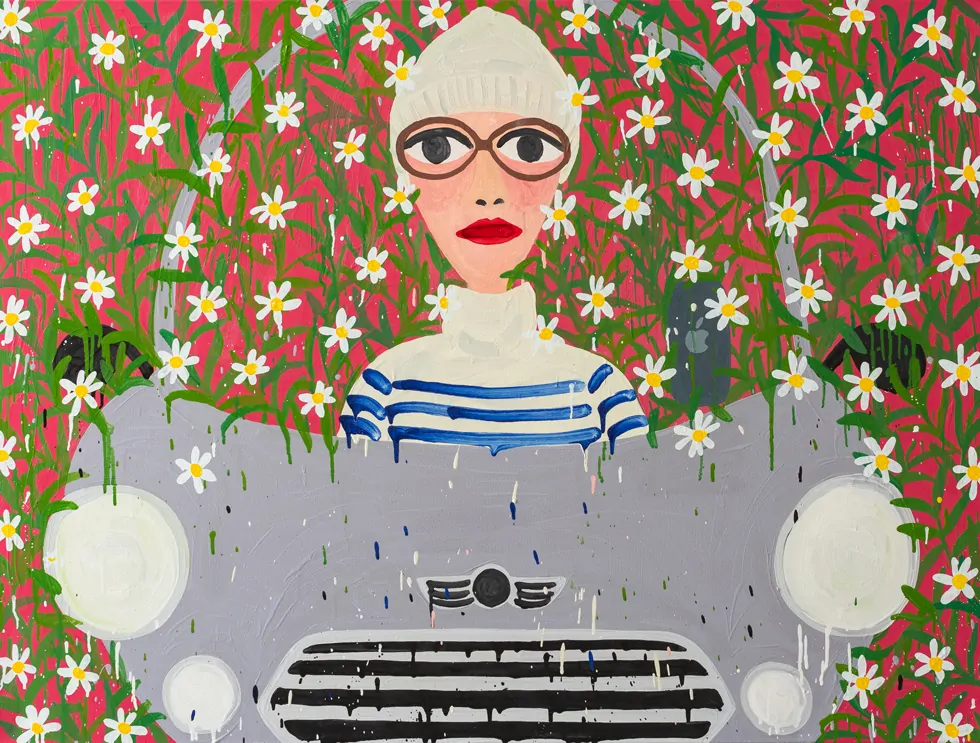
Oil on canvas
Marchella, your film The Outlaw in Me digs deep into the outlaw car scene. How did making that documentary shape the way you approached this project? Did it change the way you see these vehicles—as objects or as culture?
Marchella de Angelis: Developing MotoArto was a natural transgression having produced a film about the art of the Outlaw subculture, and their innate desires to express and connect with their creations. Indeed the relationship between metal and mortal was fascinating and in my humble opinion, this is not only a sub-culture but also a growing movement.
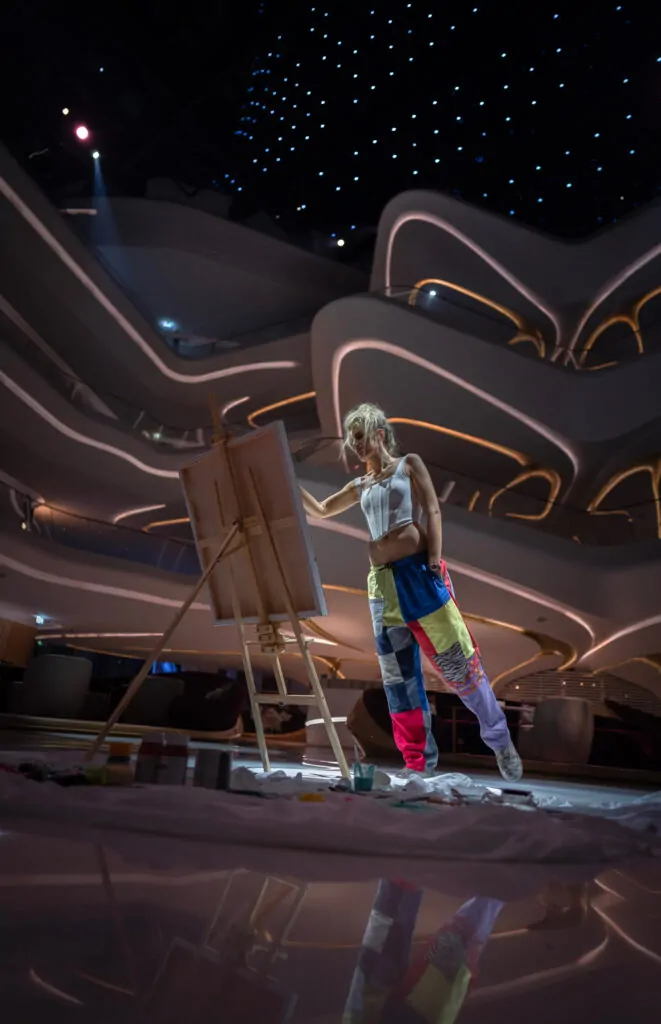
Credit Iain Duff
Kim, you’ve built Gone Rogue into a platform that encourages artists to take risks. Were there any pieces in the show that completely surprised you—or pushed the idea of the exhibition further than you expected?
Kim Shaylor: I know there will be boundaries pushed for sure. I am seeing works in progress and what I have seen so far is super cool and not going to disappoint. I’d like to think we have curated something very special, different and futuristic.
This is still a pretty male-dominated space. How intentional were you in making sure the lineup included more women and underrepresented voices? And what kind of response have you had to that?
Marchella de Angelis: It’s something we’re always thinking about. Ultimately we want a mix—not just of genders and backgrounds, but of styles and approaches too. What has been very interesting is the amount of women artists that have found the subject matter so enticing.
The nature of MotoArto and what it stands for has been hard for some to digest because for a long time now, the automotive industry has remained fairly staid, stale and safe.
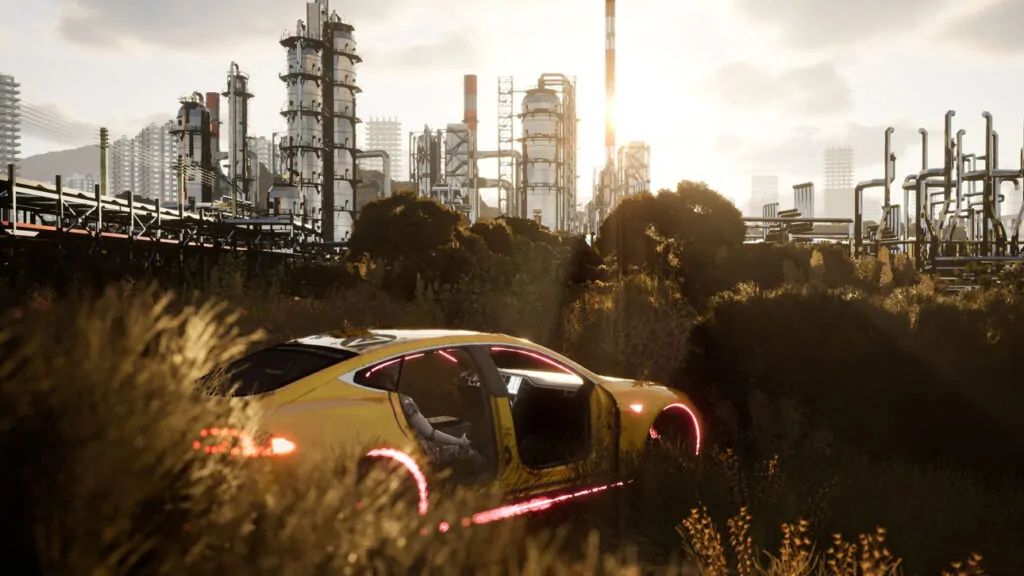
The show isn’t just visual—there’s live painting, installations, performance. Why was it important for you to make this more than just a gallery experience? What are you hoping people feel when they walk in?
Kim Shaylor: We want people to have multiple experiences. From moving imagery to immersive live artistry, to single dimension wall art and more, we want MotoArto to be a feast for the eyes!
A sensory overload in the best way possible whilst appealing to a wider audience who can see that this is not just another car show or art fair, and that you don’t really need to know too much about cars in the end.

There’s this growing idea that modified cars are kind of like wearable art or self-expression on wheels. Do you think that’s where car culture is headed—and does MotoArto Network tap into that shift?
Marchella de Angelis: More and more, people are seeing their vehicles as an extension of themselves. The same way you might carve your tattoos, customise your clothes or your phone, people want their cars and bikes to feel personal, and some of these personalisations are even emotionally linked.
MotoArto acknowledges these major shifts within consumerism and we celebrate this by bringing artists and automotive makers together, in order to explore where individuality, creation and machines collide.
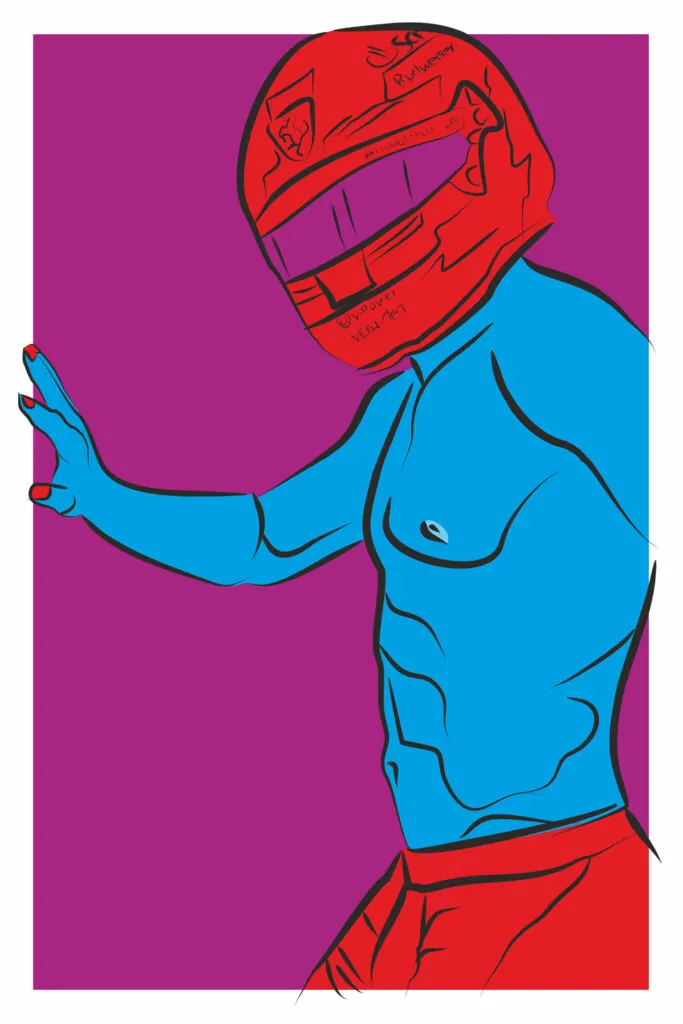
If MotoArto Network does what you want it to do, how do you hope it changes the way people think—not just about cars or art, but about the space where those two things meet?
Marchella de Angelis: As a rule society always looks to compartmentalise and segregate. People think of art in mostly a singular medium of art being just art, whereas even the art of accountancy or housekeeping could be something to applaud, if we were to credit it as an artform.
MotoArto is a merger of both automotive and art celebrating a space which allows us all to be ‘ Outlaw ‘ for a moment and whereby the fusion of two things synergise without the need for explanation.
©2025 MotoArto Network




